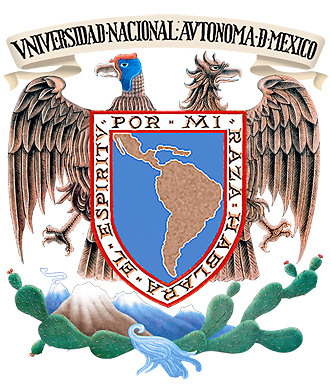COLORADO DEPARTMENT OF PUBLIC HEALTH AND ENVIRONMENT WATER QUALITY
COLORADO FRONT RANGE TRAIL STANDARD TRAIL SIGNAGE(9 CCR 25039) 3900 COLORADO CHILD CARE ASSISTANCE PROGRAM
5 PHYSICS FOR EVERYONE HTTPWWWCOLORADOCOLLEGEEDUDEPTPCREPRESENTATIVEPHYHOMEHTM KINEMATICS ANSWERS AUGUST 1
ADOPTED DECEMBER 10 2009 COLORADO ACADEMIC STANDARDS SCIENCE “SCIENCE
ALAMOSA AREA COLORADO PRINT DATE 04192004 TABLE ENG1CONSTRUCTION MATERIALS
ALAMOSA AREA COLORADO PRINT DATE 04192004 TABLE GRECREATIONAL DEVELOPMENT
COLORADO DEPARTMENT OF PUBLIC HEALTH AND ENVIRONMENT
WATER QUALITY CONTROL COMMISSION
5 CCR 1002-64
BIOSOLIDS REGULATION
REGULATION NO. 64
. . . .
64.15 USE OF BIOSOLIDS FOR AGRICULTURE AND RECLAMATION
. . . .
D. Groundwater.
(1) No person shall apply biosolids for beneficial use on land which is underlain by groundwater where the annual high groundwater table is within five feet of the surface of the land. Determination of the annual high groundwater table shall be made as follows:
(a) Groundwater depth determinations based upon direct observation using piezometric tubes of other groundwater depth monitoring devices shall be the preferred method of groundwater depth determination. The Division may require installation of such devices in instances where other information which is developed does not conclusively demonstrate adequate depth to groundwater, alternately,
(b) U.S.D.A. Soil Survey maps of the application site, and/or
(c) Well completion records may be considered as documentation, either singly or in combination with other supporting documentation, in instances where surface topography, vegetation, or lack of seasonal ponding suggest that adequate depth to groundwater exists, and/or
(d) Any other methods approved by the Division.
. . . .
G. Soils.
(1) No person shall apply biosolids for beneficial use on land cultivated in food crops where the soil exhibits a pH of less than 6.0 standard units.
(2) No person shall apply biosolids for beneficial use on land unless:
(a) for irrigated agricultural land, the depth of suitable soil is a minimum of three (3) feet, or
(b) for agricultural land cultivated in dryland crops, or for rangeland, the depth of suitable soil is a minimum of eighteen (18) inches, or
(c) for reclamation of disturbed land the depth of suitable soil is a minimum of twelve (12) inches.
(d) For the purposes of this paragraph 64.15(G)(2), the depth of suitable soil shall be defined as the distance beneath the level in the soil at which biosolids are placed to the level at which impermeable substrata are encountered. The Division shall approve the method of determining depth to suitable soil.
H. Nutrient Management.
(1) No person shall apply biosolids for beneficial use to agricultural land such that nitrogen application exceeds the agronomic rate for the crop or vegetation cultivated. Agronomic loading rates shall be determined in a manner that is acceptable to the Division and shall account for plant available nitrogen sources which may include biosolids, manures, fertilizers, irrigation water, residual soil nitrogen, and soil organic matter. The Division may require monitoring to determine background levels of nitrogen in irrigation water in instances where the soil percolation rate, groundwater depth and residual soil nitrogen level indicate a reasonable potential for excessive nitrogen transport to groundwater.
(2) No person shall apply biosolids for reclamation of disturbed land such that the nitrogen application exceeds the agronomic rate for the vegetation which is to be established, except that such application rate may be based upon an aggregate agronomic need representing the initial five years after application occurs or as justified in an operational plan that documents the application rate and process has been designed to prevent the discharge of pollutants to State Waters, and is approved by the Division.
(3) When, per paragraph (2) of this subsection, a nitrogen application rate is requested which is based on an aggregate agronomic requirement for the vegetation, the Division may specify additional siting and operational restrictions which are more stringent than those otherwise specified within this section 64.15, or additional monitoring requirements which are more stringent than those specified in section 64.16 of these regulations.
(4) The plant available nitrogen levels (lbs per dry ton) in biosolids shall be calculated as follows:
Biosolids PAN = (m) (Organic N) + (v) (NH4-N) + (NO3-N)
Where:
PAN
= Plant Available Nitrogen (lbs per dry ton of biosolids)
m =
Mineralization Factor
v = Volatization Factor
Organic N =
organic nitrogen in biosolids (%)
NH4-N =
Ammonia-nitrogen in biosolids(%)
NO3-N =
Nitrate-nitrogen in biosolids (%)
(5) No person shall apply biosolids for beneficial use to land, unless;
(a) For Soil pH greater than 6.5, the available phosphorus content of the soil does not exceed:
a. Sodium bicarbonate extraction - 80 ppm; or
b. AB-DTPA extraction - 40 ppm
(b) For Soil pH 6.5 or less, the available phosphorus content of the soil does not exceed:
a. Bray P1 extraction - 120 ppm; or
b. Mehlich 3 extraction - 200 ppm
c) Where a phosphorus content limit in subsection (a) or (b), above, is exceeded, the Division may allow land application of biosolids where the potential for phosphorus movement off-site is minimized based on evaluation of site-specific conditions, management practices, application methods, and rates (e.g., in accordance with the Colorado phosphorus index).
. . . .
64.16 MONITORING AND ANALYSIS
A. Biosolids Monitoring.
(1) For purposes of this section, "Annual Biosolids Production " is defined as the amount of biosolids (dry weight basis) applied to the land, which also includes those facilities that further process biosolids, e.g. “composting”, that is distributed to the public. Collection and analysis of biosolids shall be accomplished after final treatment and at the frequencies specified in Table 7. When sampling is required once per year samples shall be collected during the fourth quarter (October 1 through December 31) unless the Division approves otherwise.
. . . .
64.32 STATEMENT OF BASIS, SPECIFIC STATUTORY AUTHORITY, AND PURPOSE; MAY 12, 2014 RULEMAKING HEARING; EFFECTIVE JUNE 30, 2014
The provisions of Colorado Revised Statute Sections 25-8-202(1)(c) and (2), 25-8-205(1)(e), 25-8-501(1) and (2), and 25-8-509 C.R.S, provide the specific statutory authority for the Colorado Biosolids Regulations adopted by the Commission. The Commission has also adopted, in compliance with Colorado Revised Statute Section 24-4-203(4) C.R.S., the following Statement of Basis and Purpose.
BASIS AND PURPOSE
The Commission found it necessary to clarify, modify or update four parts of these regulations.
An option was added to section 64.15D(1) and 64.15G(2) that allows the Division to approve additional means to determine the depth to groundwater and depth of suitable soil. This allows more flexibility for the Division when a permittee is trying to determine these levels.
Under section 64.15H(2), the language was expanded to allow the use of operation plans to allow more flexibility in determining the application rate for reclamation sites.
Under section 64.15H(5), the phosphorus values and references were updated to be consistent with other federal and state programs. This will make it easier for the permitted community to be in compliance.
Finally, the Commission found that re-wording section 64.16A(1) clarified the number of tests that need to be performed on biosolids prior to beneficial use and which facilities need to test.
PARTIES TO THE RULEMAKING HEARING
1. Rocky
Mountain Water Environment Association Biosolids Committee
2. Parker
Ag Services, LLC
APPORTIONMENT OF COLORADO SALES AND USE TAX ON COMPUTER
BELOW SPACE FOR OFFICE USE ONLY COLORADO SECRETARY OF
C CORPORATION NET OPERATING LOSS 3922504(2) 1) THE COLORADO
Tags: colorado department, with colorado, environment, quality, department, water, colorado, public, health
- TEMARIO DEL CURSO NOMBRE DEL CURSO ACCESS PROGRAMACIÓN
- ELBESPARELSER VED KALK OG FOULING OG FRIKTIONSNEDSÆTTENDE MATERIALER FASE
- CONSULADO DE ESPAÑA –LARACHE OFICINA DE VISADOS VISADO DE
- M OLIM ZAMIJENITE S OVOM PRISTUPNICOM ZAHTJEV ZA PRIMITAK
- MBHI MATCHCARD 2122V01 MUNSTER BRANCH HOCKEY IRELAND – MATCH
- REGULAMIN ODWIEDZIN PACJENTÓW 1 KIEROWNICTWO SZPITALA SPECJALISTYCZNEGO IM J
- POSTUP PRO VALIDACIVERIFIKACI METODY1 PŘED ZAVEDENÍM NOVÉ ANALYTICKÉ METODY
- DIABETES THEME HEALTH AND WELLBEING STATUS BACKGROUND INFORMATION DIABETES
- MATHEMATICS DEPARTMENT RUBRIC FOR ORAL PRESENTATIONS RELATED TO GOAL
- ALGEBRA APPLICATIONS WRITING LINEAR EQUATIONS PRACTICE TEST NAME DATE
- SOLICITUD INCENTIVOS A LA MOVILIDAD EFICIENTE Y SOSTENIBLE (PROGRAMA
- APPS TO IMPROVE SOME FUNCTIONSAPLICACIONES PARA MEJORAR ALGUNAS FUNCIONES
- MICROBIOLOGY OF BEER BREAD AND CHEESE – FALL 2017
- 29 BAB II TINJAUAN PUSTAKA A LANDASAN TEORI 1
- PENGOLAHAN SINYAL DIGITAL KODE MATA KULIAH 3T0515 KREDIT 2
- 27 BAB 2 LANDASAN TEORI 21 KAJIAN TEORI PADA
- BM2021ĐTSĐHNCSHDV&TBLA020 HƯỚNG DẪN VIẾT VÀ TRÌNH BÀY LUẬN ÁN
- 27 BAB 2 LANDASAN TEORI 1 ARSITEKTUR
- SUPPLEMENTARY MATERIAL (ESI) FOR CHEMICAL COMMUNICATIONS THIS JOURNAL IS
- ÚVODNÍ VYSTOUPENÍ BÍDA EVROPSKÝCH VYSOKÝCH ŠKOL MÁ JMÉNO BOLOŇA
- СВЕДЕНИЯ О СХЕМАХ ИЗБИРАТЕЛЬНЫХ ОКРУГОВ ПО ВЫБОРАМ ДЕПУТАТОВ ПРЕДСТАВИТЕЛЬНЫХ
- “using Library Information Systems as Still Image Archives” Arturs
- 15 BAB II LANDASAN TEORI 1 IC TTL 1
- INTERACTIVE WHITEBOARD PROJECTORS & ASSOCIATED SOFTWARE (INWPAS) ASI SOLUTIONS
- CONVOCATORIA DE AYUDAS A LA INVESTIGACIÓN DE SEOBIRDLIFE AÑO
- AYUNTAMIENTO DE YUNQUERA DE HENARES (GUADALAJARA) PLIEGO DE
- SUJETO OBLIGADO CONFORME LEY 25246 Y MODIFICATORIAS DECLARACIÓN JURADA
- FORMULARI DE DADES PER AL DUE SOCIETAT LIMITADA Ó
- EL CENTRO ANDALUZ DE LAS LETRAS Y EL DISTRITO
- IEPIRKUMA PROCEDŪRAS „CEĻU HORIZONTĀLĀ UN VERTIKĀLĀ APZĪMĒŠANA” ID NR
 TREASURY OFFSETS WHAT IS A TREASURY OFFSET NOTICE? A
TREASURY OFFSETS WHAT IS A TREASURY OFFSET NOTICE? AMODERNI DEMOKRATSKI SISTEMI SU OLIGARHIJSKI SISTEMI NEGACIJA UVOD OSNOVNO
……………………………… GDAŃSK DNIA…………………… (IMIĘ I NAZWISKO) ……………………………………… (ADRES ZAMIESZKANIA)
 PLIEGOS DE BASES Y CONDICIONES PARTICULARES NOMBRE DEL ORGANISMO
PLIEGOS DE BASES Y CONDICIONES PARTICULARES NOMBRE DEL ORGANISMO ALGUNS CONSELLS SOBRE CÍTRICS SABIES QUE…? LA TARONJA ÉS
ALGUNS CONSELLS SOBRE CÍTRICS SABIES QUE…? LA TARONJA ÉSBIOVRT – U SKLADU S PRIRODOM OBRAZAC ZA UČLANJENJE
 UNIVERSIDAD NACIONAL AUTÓNOMA DE MÉXICO FACULTAD DE INGENIERÍA REGLAMENTO
UNIVERSIDAD NACIONAL AUTÓNOMA DE MÉXICO FACULTAD DE INGENIERÍA REGLAMENTOFINAL REPORT FAMILIAL STATUS TESTING IN SIX IOWA CITIES
 COMUNICADO DE PRENSA NÚM 2721 26 DE ENERO DE
COMUNICADO DE PRENSA NÚM 2721 26 DE ENERO DE PRAZA CONSISTORIO1 36430 ARBO – (PONTEVEDRA) TELF986665000 FAX
PRAZA CONSISTORIO1 36430 ARBO – (PONTEVEDRA) TELF986665000 FAX ZAPROSZENIE DO ZŁOŻENIA OFERTY NA DOSTAWĘ ODCZYNNIKÓW CHEMICZNYCH NA
ZAPROSZENIE DO ZŁOŻENIA OFERTY NA DOSTAWĘ ODCZYNNIKÓW CHEMICZNYCH NAINFORMACJA TECHNICZNA IMPARAT POLSKA FARBY PROFESJONALISTÓW TRIMAT UNITOP
 WHO’S WHO AT FIRST FIRST LEADERSHIP 2 BECKY ALSETH
WHO’S WHO AT FIRST FIRST LEADERSHIP 2 BECKY ALSETH2021 V M O – 1 NA OSNOVI ČLANKA
ANALISTA DE CALIDAD EN CHD (CONGELADOS Y HARINA DE
SAYFA NO 15 MECLİS KARAR ÖZETİ 20 NİSAN 2019
Zagorski Vodovod doo Zabok Ksavera Šandora Gjalskog 1 oib
 CURRICULUM OBJECTIVES CLUSTER 0 OBJECTIVES 704E DEMONSTRATE WORK HABITS
CURRICULUM OBJECTIVES CLUSTER 0 OBJECTIVES 704E DEMONSTRATE WORK HABITS10144 CHAPTER 23 REGULATIONS GOVERNING THE LICENSING AND FUNCTIONING
 FICHE N°1 À DESTINATION DES ENSEIGNANTS DATE ET
FICHE N°1 À DESTINATION DES ENSEIGNANTS DATE ET